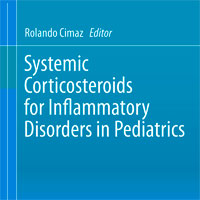Tag: treatment
Severe Listeriosis in the ICU: Critical Insights from a Multicenter Study
A retrospective multicenter study across 23 French hospitals over 10 years analyzed critically ill ICU patients with culture-confirmed "Listeria monocytogenes" infections. The study aimed to describe patient characteristics,... read more
Sepsis and Septic Shock: An Issue of Critical Care Clinics
Shock is caused by the decreased flow of blood to the body tissues due to circulatory system related problems. Sepsis refers to a life-threatening condition where the body causes injury to its own organs and tissues in response... read more
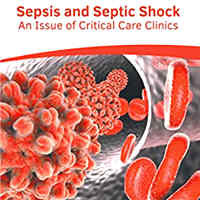
Biomarkers in Trauma, Injury and Critical Care (Biomarkers in Disease: Methods, Discoveries and Applications)
This handbook systematically presents biomarkers for traumatic injuries. The book covers topics such as traumatic brain injury, liver injury, burn severity, muscle heart damage, and acute inflammation in polytrauma and their... read more
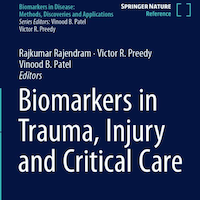
Hemodynamic Stabilization Using CRRT and cIVNa Combination Therapy
Compared with conventional continuous renal replacement therapy (CRRT), combination therapy of CRRT and continuous intravenous sodium infusion therapy (cIVNa) increased blood pressure, enhanced urinary volume, and reduced... read more
A Novel Mechanism for COVID-19 Related Thrombotic Events: Platelet NO/ROS Equilibrium
The finding that platelet NO/ROS production imbalance contributes to the elevated risk of thrombotic events in COVID-19 has important clinical implications. Restoration of platelet NO production, as well as attenuation... read more
Red Book: Report of the Committee on Infectious Diseases
Extending an 8-decade tradition of excellence, Red Book® provides the most reliable and clinically useful information on the manifestations, etiology, epidemiology, diagnosis and treatment of more than 200 childhood infectious... read more

COVID-19 Handbook: Navigating the Future of Healthcare
The COVID-19 Handbook: Navigating the Future of Healthcare provides factual, evidence-based information on the coronavirus disease 2019 (COVID-19) pandemic. Presented in a concise PDF format, this valuable COVID-19 resource... read more
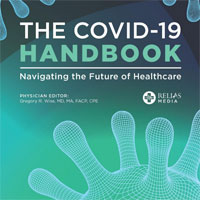
Tocilizumab vs. IVIG in Patients with Severe COVID-19 Pneumonia
Severe COVID-19 patients who received IVIG in the early phase of the disease did not show better clinical outcomes in terms of mortality, hospitalization time and intensive care unit admission compared to those who received... read more
Femoral Head Osteonecrosis in Post-COVID-19 Patients
This study provides an insight into the relationship between COVID-19-related factors and the development of osteonecrosis of the femoral head (ONFH), emphasizing the critical role of cumulative steroid dose as the primary... read more
Baricitinib Use in Children with Severe COVID-19 Infection
Baricitinib appears safe for both immunocompetent and immunocompromised children hospitalized for severe COVID-19. Most adverse events did not inhibit therapy administration, and there were no deaths following the initiation... read more
Sepsis Management: PIRO and MODS
This book is unique in approaching multiple organ dysfunction syndrome (MODS) from the perspective of its pathophysiological mechanism, and addressing aspects that are overlooked in most of the available literature. Eminent... read more
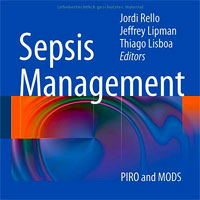
Dynamic Left Ventricular Outflow Tract Obstruction Induced by IABP in Patient with Angioedema
Mechanical circulatory support with intra-aortic balloon pump (IABP) can aid in the treatment of cardiogenic shock but may rapidly become detrimental due to the reduction in systolic arterial afterload in patients with predispositions... read more
Septic Shock Metabolic Subgroups and Clinical Outcome
Three metabolic clusters exist in patients with septic shock with most metabolites differing between clusters and lipid species being most influential. Cluster proportions evolved over time with a high metabolite group... read more
Sepsis: Staging and Potential Future Therapies
Sepsis is a life-threatening organ dysfunction caused by a dysregulated host response to infection. Variability in pathogenesis and complex pathophysiology often delay diagnosis and create significant challenges for clinical... read more

VA-ECMO and Pulmonary Reperfusion
The study by Stadlbauer and colleagues provides further evidence that veno-arterial extracorporeal membrane oxygenation (VA-ECMO) should—whenever necessary—be used, as a bridge to pulmonary reperfusion, but not as a bridge... read more
Successful Clearance of Persistent Staphylococcus Aureus Pneumonia Using High-dose Continuous Infusion Cefazolin
High-dose cefazolin (10 g daily), given as a continuous infusion (CI), was able to clear community-acquired methicillin-susceptible Staphylococcus aureus (MSSA) pneumonia while not exhibiting any signs of toxicity or adverse... read more
Pulmonary Hypertension: Basic Science to Clinical Medicine
This book provides the framework for a singular reference in the field of pulmonary hypertension. Pulmonary vascular disease is a complex and heterogeneous condition characterized by remodeling of distal pulmonary arterioles... read more

Massive Pulmonary Embolism with Clot in Transit Using Fluoroscopic and Transthoracic Echocardiographic-Guided Large-Bore Mechanical Thrombectomy
Massive pulmonary embolism (PE) is a life-threatening condition caused by the obstruction of pulmonary arteries requiring precise and timely intervention to prevent mortality. Clots in transit (CIT), which are thrombi... read more
Cardiovascular Complications of COVID-19: Acute and Long-Term Impacts
This book is the first comprehensive approach on COVID-19 cardiac complications, both during the acute phase as well as in the long-COVID period. It provides an up-to-date and highly illustrated summary of the biology... read more
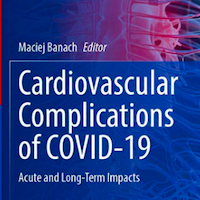
Standard vs. Double Dosing of Beta-lactam Antibiotics in Critically Ill Sepsis Patients
The BULLSEYE trial is a randomized controlled study designed to enhance the treatment of critically ill patients with septic shock. The concept of administering higher and double doses of beta-lactams in such patients... read more
PCR and Biomarker Algorithms to Guide Antibiotics in Lower Respiratory Tract Infections
Acute chest syndrome (ACS) in sickle cell disease (SCD) is life-threatening and characterised by a new infiltrate on imaging plus fever or respiratory symptoms.1 Causes of ACS include infections, venous or fat embolisms or... read more
Systemic Corticosteroids for Inflammatory Disorders in Pediatrics
This comprehensive volume provides current state of the art of the use of corticosteroids in the pediatric patient. It consists of 14 chapters written by leading authors from different countries. The first chapters cover... read more
